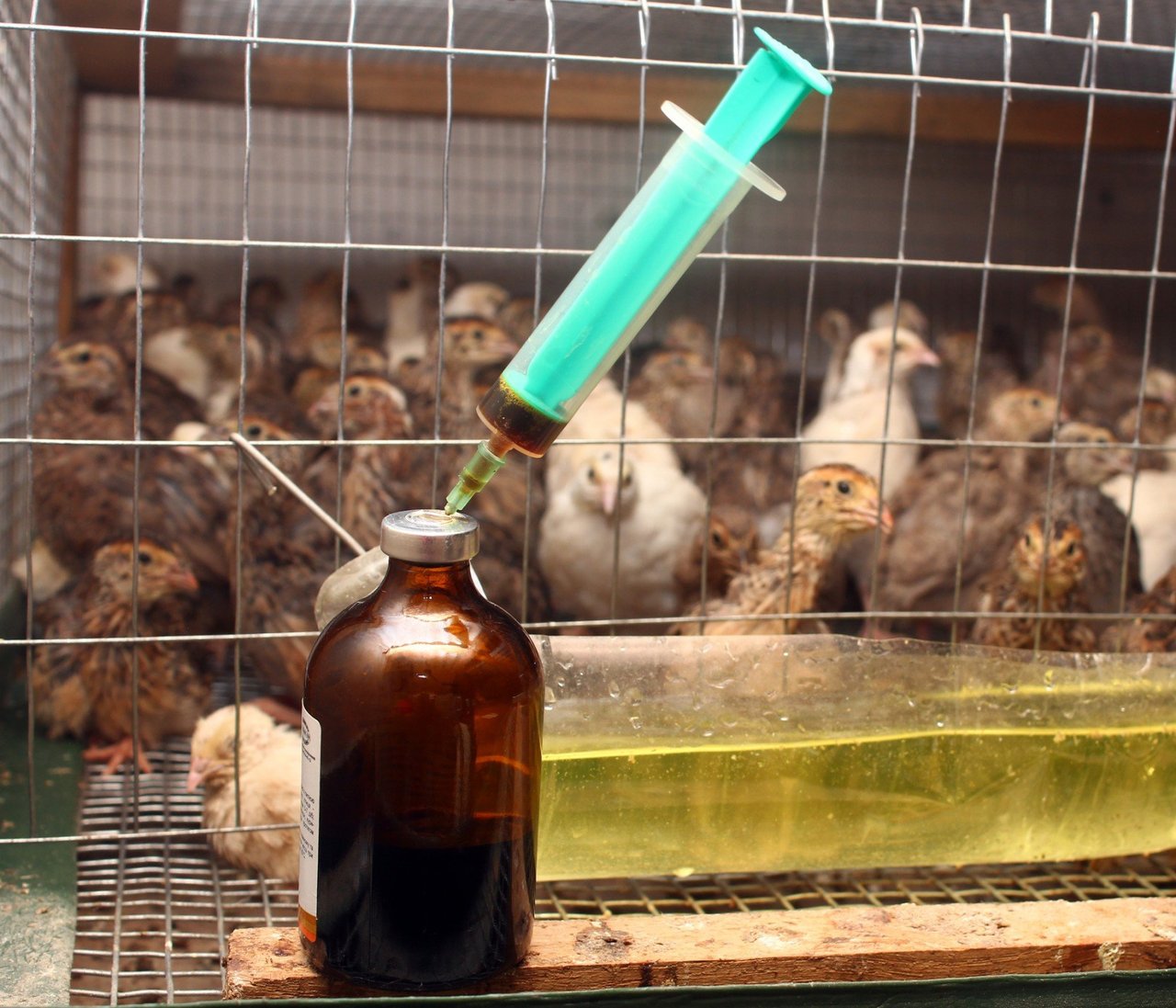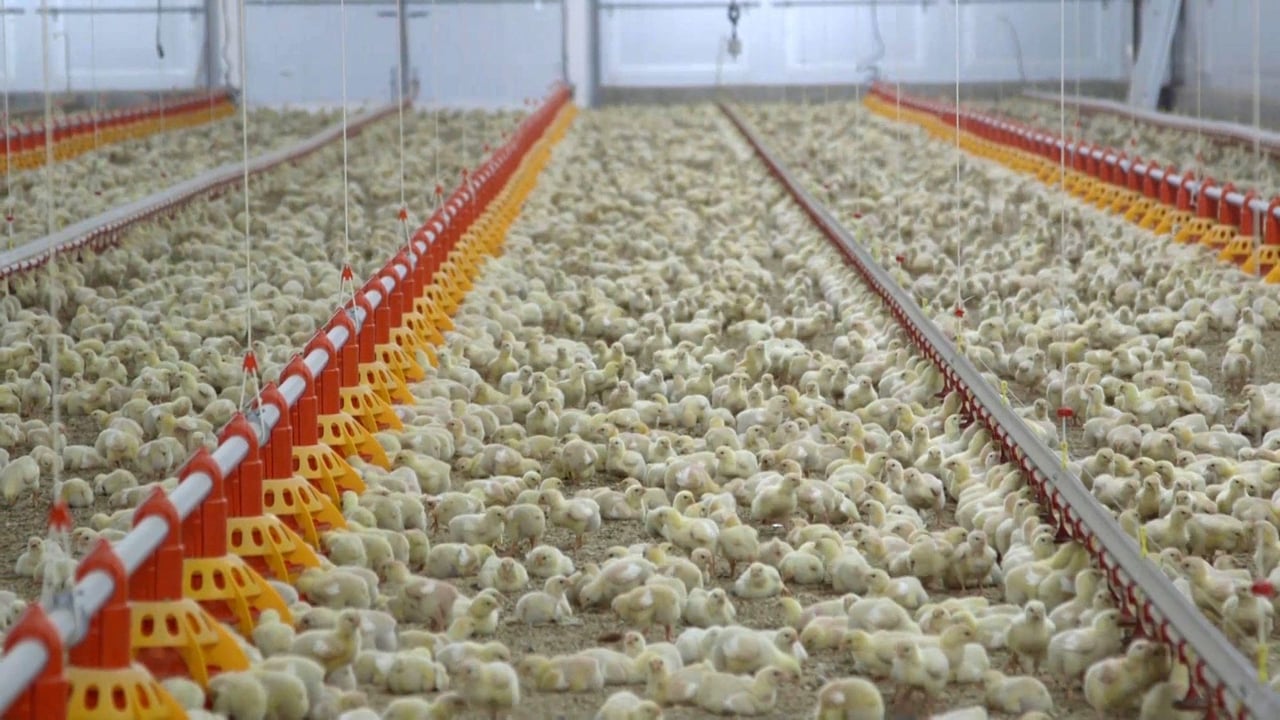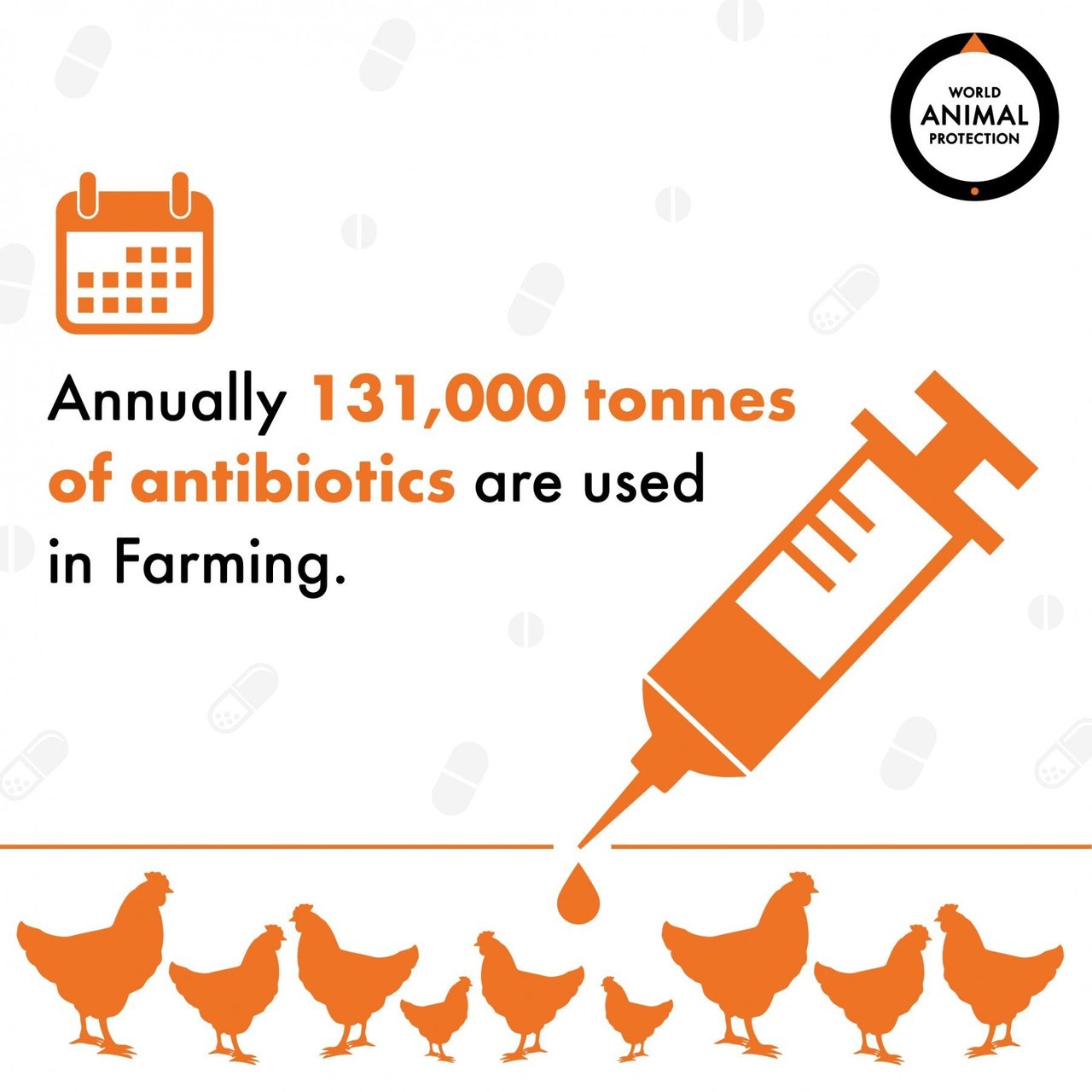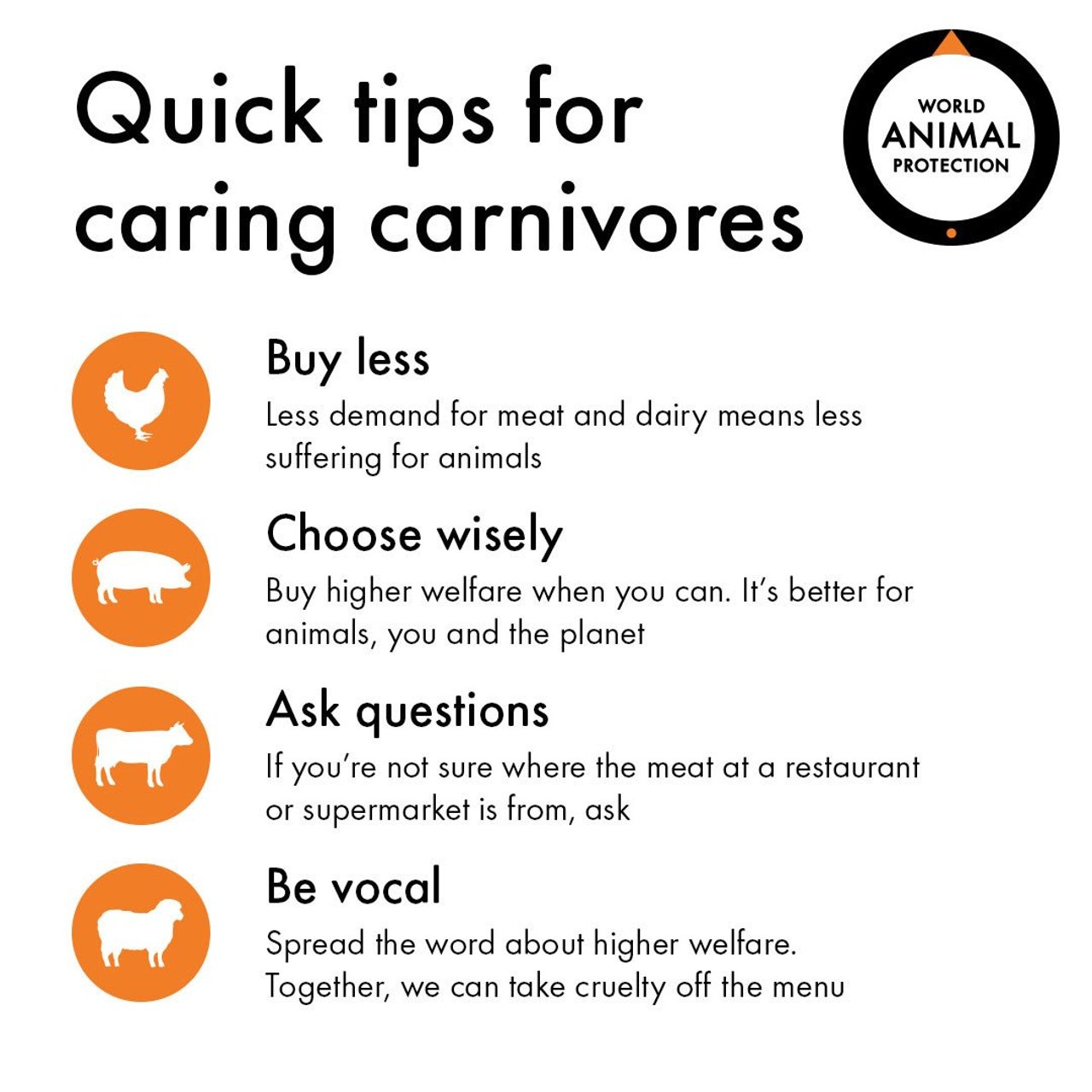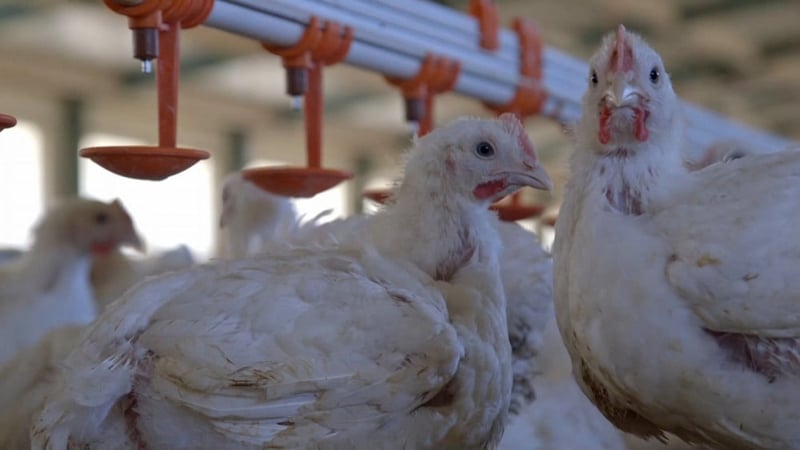
Antibiotic Resistance: A Silent Pandemic
What is an Antibiotic?
The word antibiotic means “against life.” Antibiotics, also known as antibacterial, are medicines that help in completely killing or slowing down the growth of bacteria.
What is Antibiotic Resistance?
Antibiotic resistance happens when an antibiotic loses its ability to control or kill bacteria effectively. In other terms, an organism's capacity to resist the killing effects of an antibiotic to which it was earlier susceptible. Antibiotic resistance is often called “Superbugs.”
What is Factory Farming?
Factory farming or intensive animal farming is the intense and confined farming of animals such as pigs, cows, and birds. Otherwise known as “concentrated animal feeding operations (CAFOs),” or “intensive animal agriculture,” factory farms are industrial facilities that raise large numbers of animals, mostly indoors, in conditions intended to maximize production at a minimal cost.
How is factory farming leading to Antibiotic Resistance/Superbugs?
- Antibiotics are used routinely to prop up low welfare practices on factory farms. Their overuse contributes to the rapid rise and spread of bacteria resistant to medicines used to fight infections.
- Roughly three-quarters of all antibiotics sold each year are marketed for use in farm animals rather than humans. For decades, factory farms have relied on providing animals with continuous doses of antibiotics to maintain the barns' high densities and poor conditions.
- The intense stress and crowding would naturally hinder the animals’ growth and development and make them susceptible to disease and infection.
- Including regular doses of antibiotics in the feed and water for entire herds or flocks, in addition to injecting drugs at various stages throughout their development, is a low-cost way to keep the highly-stressed, immune-compromised animals alive and growing at a fast rate.
Want to know how resistance develops and spreads? Meet Sal the Superbug and Molly the Pig.
Antibiotics Resistance is not just restricted to farm animals
- Antibiotics and their residues pass through the animals and into the environment via manure, speeding the evolution of drug-resistance among bacteria in soil and water when manure is sprayed on crop fields as fertilizer.
- Animals fed with large quantities of antimicrobials excrete them via urine and faeces into the environment. Hence, sewage disposal is also one of the most common routes through which antimicrobials gain entry into the environment.
- Resistant bacteria can also be found in airborne particulate matter surrounding factory farms. Flies and insects often contact farmed animals and manure, and research has found houseflies near poultry farms carrying resistant bacteria strains.
- Resistant bacteria also travel through the food supply farms when the animals are slaughtered for meat.
- Testing by World Animal Protection in 2019 found bacteria resistant to critically important medicines present on pork products purchased from prominent national supermarkets.
- Resistant bacteria—called “superbugs”—are carried off farms via water, air, workers, insects, wildlife, and meat, reaching humans and causing life-threatening illness.
- The United Nations considers superbugs one of the biggest global public health concerns of the 21st century. According to the most recent publicly available data, more than 13 million pounds of medically important antibiotics are sold for use in food animal production, compared to about 7 million pounds sold for human medical use.
- Global antibiotics usage in animals producing food was 131,109 tons in 2013, which is estimated to rise over 50% to 200,235 tons by 2030.
- India is one among the BRICS countries – Brazil, Russia, India, China and South Africa where antimicrobials are expected to double. Globally, experts predict that if current practices are allowed to continue, 10 million people will die each year from resistant infections by 2050. This is what will turn into a pandemic silently.
How High Welfare is a way to reduce the use of antibiotics?
- High Welfare means slower-growing breeds, no overcrowding of animals in sheds, more natural light and the presence of enriched environments with perches and hay bales to perform natural behaviour.
- Farmed animals in high welfare systems have reduced stress and improved immunity and resilience to disease.
- For example, the industry in Sweden weans piglets from their mothers at a minimum of 28 days after birth (compared to at around 18 days in the US), resulting in improved immunity and robustness for the pigs and leading to roughly 100-times fewer antibiotics being used compared to other European countries.
- Cattle fed pasture tend not to be given antibiotics routinely via feed than cattle consuming conventional grain diets.
- The use of high welfare chicken breeds that grow more slowly allows for substantially lower antibiotic use than intensive systems using fast-growing breeds.
Take Action
The increasing demand and ongoing pressure to reduce production costs have intensified animal production without taking care of animal welfare. The health and welfare of the animals is a known barometer of any food business's health and welfare. According to the Food and Agriculture Organisation, Animal welfare is a global common good that forms an integral part of the livestock sector's responsible development. Even several studies have quantified animal welfare's economic returns and have shown that the application of animal welfare standard and practices can indeed contribute to increasing food security and income. Eventually, the care and nutrition given to animals will, in turn, provide a healthy supply of food to humans.
One Health is a collaborative, multisectoral, and transdisciplinary approach—working at the local, regional, national, and global levels—to achieve optimal health outcomes recognizing the interconnection between people, animals, plants, and their shared environment. The areas of work in which a One Health approach is particularly relevant to include food safety, the control of zoonoses (diseases that can spread between animals and humans, such as flu, rabies and Rift Valley Fever) combatting antibiotic resistance.
The WHO theme for World Health Day 2021 is 'Building a fairer, healthier world'. And from this year onwards, right amidst the global pandemic, we must build back better towards “One Health” and sustainable food systems to avoid another silent pandemic “, Antibiotic Resistance.”
Livestock health is inevitably linked to the health of consumers. Your voice is the most important force in helping the chickens to live a better life. Let's demonstrate the power of collective calling by demanding Yum! Brands India for the better welfare of chickens in its supply chain for their brands like KFC and Pizza Hut! Sign Up Now!
Source:
- http://www.fao.org/ag/againfo/themes/animal-welfare/aw-abthegat/aw-whaistgate/en/
- Antibiotic-Resistant Superbugs: How Factory Farming is Driving Another Global Health Crisis | World Animal Protection
- Quantitative and qualitative antimicrobial usage patterns in farrow-to-finish pig herds in Belgium, France, Germany and Sweden - PubMed (nih.gov)
- Effect of Antimicrobial Consumption and Production Type on Antibacterial Resistance in the Bovine Respiratory and Digestive Tract (plos.org)
- https://edepot.wur.nl/475403
- One Health | CDC
- One Health (who.int)
- The Issue — Antibiotics Off the Menu
- Positive list of antibiotics and food products: Current perspective in India and across the globe (nih.gov)
The WHO theme for World Health Day 2021 is 'Building a fairer, healthier world'. And from this year onwards, right amidst the global pandemic, we must build back better towards “One Health and sustainable food systems to avoid another silent pandemic “Antibiotic Resistance
